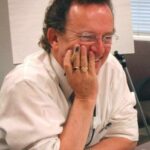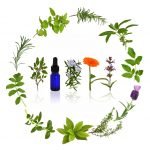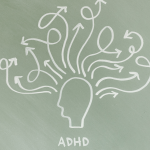Who We Are… And Why This is Tough to Explain to Legislative Licensing Committees
David Schleich, PhD
At the end of November 2007, a number of people testified before the Pennsylvania State Licensing Committee. Michael Reece, ND and Michelle Qaqundah, ND of the Pennsylvania Association of Naturopathic Physicians (PANP) had prepared an impressive lineup of supporters, including actual patients and the strongly supportive medical team of the Cancer Treatment Centers of America in Philadelphia. Those opposed to the legislation (e.g., the Pennsylvania Osteopathic Medical Association, American Osteopathic Association, Pennsylvania Medical Society and the Coalition for Natural Health, among others) were there with their customary arguments. Invariably, our detractors did not understand that naturopathic medicine as a regulated profession has been around a long, long time, and nearby too (New Hampshire, Vermont, Maine, Connecticut and Ontario). In fact, the latter two jurisdictions have regulated naturopathy since the early 1920s.
GSS Khalsa, ND (dean at University of Bridgeport) and I told the legislators about the location of naturopathic medicine within the CAM professions, emphasizing the substantial education platforms from which spring the modalities, therapies and aspects of the naturopathic medical system that were key to the proposed legislation. As the hearing continued, though, I was reminded once again how quickly the terrain is shifting and that the intersection of jurisdictions and interests continues to heat up. At one juncture of the debate, the Coalition for Natural Health spokesperson insisted that NDs were threatening the livelihood of his 2,800 members. Ahead of him, the president of the Pennsylvania Medical Society stayed long enough to express doubt about the educational preparation of NDs and our capacity for determining and communicating a reliable diagnosis and treatment path. The Coalition also snuck into the conversation implications that our request for licensure in Pennsylvania is part of an attempt by the global pharmaceutical companies to systematically “complement” their prolific product offerings with herbal lines (Brody, New York Times, 1999) and that we want a spot in that monopoly.
A few weeks later in North Carolina, Susan DeLaney, ND recounted the challenges of a similar effort in her state legislature. Back in October in Colorado I heard similar challenges in that state’s licensing process. Within all this activity (New York is very active at the moment, too), there remains a clear need for us to be ready with a coherent, consistently articulated understanding of what “alternative medicine,” “complementary medicine” and “naturopathic medicine” mean after the long flight path since Lust and Lindlahr’s. Meanwhile, the field of natural medicine itself, within which naturopathic medicine is located, is getting increasingly crowded; and the public, the mainstream medical profession and North American legislators yearn for clear territorial demarcations. Identified natural therapies abound across North America (McGuire, 1983; Hafner et al. 1992, 1993; Sergen, 1998; Baer 2001).
In Canada as in the U.S., there have been recurrent, simultaneous, controversial moments in many provincial/state and federal healthcare politics, especially when a “definition” of naturopathic medicine has been a central point of debate. In 1965, for example, the Canadian Naturopathic Association issued a formal “critique” of the federal Royal Commission on Health Services, established in 1961. The critique led off with a challenge to the definition of “naturopathy” used by the Royal Commission’s researchers. Citing a definition drawn from the Alberta Naturopathy Act, 1955, Chapter 50, section 2, the Royal Commission defined naturopathy as a “system of therapy that treats human injuries, ailments or diseases by methods of nature, including any agency of nature and employs as auxiliaries for such purpose the use of electrotherapy, hydrotherapy, body manipulation and dietetics” (Critique of The Report on Naturopathy, 1966, p.1).
The Canadian Naturopathic Association pointed out that a brief submitted to the Royal Commission in 1962 had included the appropriate definition, one drawn from the New Gould Medical Dictionary, first edition, 1941. The CNA critique went on to “respectfully submit that insofar as the Royal Commission of Health Services is concerned, correction should therefore be made so that this important point is not misunderstood” (p. 2). It is understandable, then, that finalizing and making known an enduring definition of “naturopathic medicine” has been an important aspect of the naturopathic profession’s work for many decades on both sides of the border.
NDs vs. Drugless Therapists
The overall landscape is further complicated by a long history of tension between the orthodox medical establishment and what were known as drugless practitioners in both countries. That tension was further exacerbated by the drugless practitioners themselves having a variety of registrants, very few of whom were actual naturopathic physicians. For example, at the same moment as NDs were first licensed in Connecticut, the Ontario Drugless Practitioners Act of 1925 was emerging, and in the U.S. the consolidation of the current four-year medical school program as the only entry point to practice was showing up in the brand new state licensing movement.
Back in Canada, legislative records show that Hodgins’ 1918 Report on Medical Education in Ontario and The Medical Act of 1923 referenced activity in the U.S. with specific reference to Connecticut, where NDs were being licensed as “drugless practitioners.” The Ontario 1923 Act set up five classifications: chiropractors, chiropodists, drugless therapists, masseurs and osteopaths. As far as the Board of Directors of Drugless Therapy was concerned, “drugless therapist” and “naturopath” were synonymous (Gort and Coburn, 1988, p. 1062). This same lumping in of NDs with drugless therapists was also occurring in the U.S.
However, at the inception of the legislation, which regulated the naturopathic practitioner, there was no inclusive definition of “naturopath” to accompany the implementation of the Act. In fact, a 1918 directory of drugless practitioners in North America included only one ND for Canada (Gort and Coburn, 1988, p. 1063). Complicating matters further was the role of the dual registrant in Ontario. MacNab reported in a 1970 study for The Committee on the Healing Arts that “85% of drugless therapists held dual licensure as chiropractors and drugless therapists” (Committee on the Healing Arts, 1970).
Added to this confusing professional situation was the long hiatus between the declaration and implementation of the Drugless Practitioners Act and the eventual formation of a Naturopathic Association in Ontario a quarter century later. Further, as late as 1967 only nine drugless therapists under the Drugless Practitioners Act were actual NDs. A made-in-Ontario definition of naturopathic medicine was not available, nor even on the horizon. Appropriately, the federal body, the Canadian Naturopathic Association, had taken up the task as mentioned earlier.
Almost a half-century later, NDs in Ontario are part of the larger universe of alternative practitioners and rely on definitions and classifications generated in other jurisdictions to form not only the basis of their identity in Ontario, but also to link Ontario practitioners to the North American community of NDs. So, it is not surprising that legislators quiz the forest of positions, opinions, policies and regulations that has emerged in recent years as they and medical authorities, fellow politicians and patients try to make sense of an explosion in therapies identified in the popular media and the confusing medical systems within which many of them reside. A good jumping off point is the work done by the U.S. National Institutes of Health.
Its Report on Alternative Medical Systems and Practices in the United States (1994) added greatly to the growing documentation of “named alternative therapies” that were being picked up by magazines, journals and leading newspapers in the U.S. and Canada. Efforts were unrelenting throughout the 1990s in proposing classification categories and systems for what orthodox medical academics and medical historians have labeled “unconventional healing practices” (English-Lueck, 1990; Kemper, 1996; McGuire, 1988; Pietroni, 1992; Newman, 2000; Furnham, 2000). A lead editorial in the Lancet (2000) makes the point that within this explosion of named therapies and confusing medical systems, it is “time for critical engagement.” As momentum grows for licensing in both countries, describing and defining naturopathic medicine’s location within this proliferating spectrum will be most helpful since there are many loose cannons in the CAM panoply.
Whereas as recently as 1951 Wardell predicted that naturopathic medicine would “soon disappear as a distinct medical field” (Wardell, 1951, p. 39), and Roth decided that it was a “dying health movement” (Roth, 1976, p. 121), Baer concluded 15 years later that naturopathic medicine was actually entering “a period of rejuvenation” (Baer, 1992, p. 85). Barzansky, Jonas and Etzel were able to report by the end of that decade that, “complementary medicine has become a serious subject in medical schools” (Barzansky et al., 2000). Indeed, by 1998 the American Medical Association (AMA) had even gone so far as to sponsor a systematic review of alternative medicine in its nine journals.
Fontanarosa and Lundberg (1998) set the tone for the AMA series in a lead editorial that insisted, “There is no alternative medicine. There is only scientifically proven, evidence-based medicine … or unproven medicine.” Where naturopathic medicine fits in this broad framework of orthodox and heterodox medical systems is perhaps less the question here than deciding once and for all what naturopathic medicine actually is and how it fits in. Hampering such a decision is the criticism that naturopathy “has never had a well-integrated philosophical core or a specific regimen of treatment” (Baer, 2001, p. 86). Baer’s is a strong voice in locating the place of naturopathic medicine. Tracing its roots to the Kneipp water societies of the last century, he concludes that naturopathy is “in many ways … the heir of the 19th century hygiene movement” (p. 86) but that it has evolved into a complex, modern “medical system.”
At the same time, Bloomfield contends that “naturopathy for some people means all the forms of non-allopathic medicine which depend on ‘natural’ remedies and treatments” (Bloomfield, 1983, p. 116). My efforts here at achieving a working perspective on a definition of naturopathic medicine, given these wide variations in approach, may be helped by edging away briefly from a strictly North American or even European context. There are, of course, more global medical traditions.
A Worldwide Look
For example, Michael Worboys describes “three great systems” of “medical ideas and practices”: the Chinese, Indian and Western. There are those students of the history of medicine who would understand naturopathy as an eclectic blend of ideas from among all of these three “great systems” (Worboys, 2000, p. 249). To unravel this complex interplay of ideas and practices, there is an emerging literature that continues to help (Aakster, 1986; BDDT-ONA, 1994; Bloomfield, 1983; British Medical Association, 1986; Frank, 1981; Rosengren, 1980; van Dam, 1986 and Wiesner, 1989; Baer, 1992, 2001, 2004; Boon 1996; Loudon, 1997; Kaptchuk and Eisenberg, 2001). However, the classification of so-called “complementary and alternative healthcare,” especially as these intersect with the mainstream, is an important backdrop to this study.
The defining characteristic of “mainstream” medicine within this literature has been its “reductionism and materialist approach, treating the disease rather than healing the whole sick person” (Worboys, 1997, p. 250). Western or “modern, cosmopolitan” medicine found its way to the Americas, Australasia and southern Africa, Worboys explains, and became the “legally and culturally dominant form of medicine early in the 20th century” (Worboys, 1997, p. 263). Naturopathic medicine took shape within that dynamic but appears to be part of a larger movement at the end of the second millennium toward “a new form of medical pluralism” (p. 263).
Even though naturopathic medicine’s direct lineage reaches back to Europe and came to Canada principally through the U.S., its practitioners insist that naturopathic medicine can trace its roots into antiquity on several continents (Josefek, 2000). Some observers contend that naturopathic medicine has more in common with Pen Ts’ao and the Huang Di Nei Jing, ancient Chinese healers, than modern mainstream medicine has (Cody 1986; Loudon 1997). Other observers ignore claims to ancient origins and focus entirely on the future development opportunities of naturopathy (Salzman & Matathia, 1998).
However, whether one is talking about its future markets or its roots in traditional Chinese medicine, there is ample evidence that naturopathic medicine enjoys linkages with ancient practitioners such as the Greek physicians and ancient healers (Heraclites, Empedocles, Hippocrates or Herophilus of Chalcedony). Elders of the naturopathic profession insist that the modern ND rests his or her profession on a foundation and filaments of knowledge and practice that transcend centuries (Cody 1986; Lindlahr, 1913; Lust, 1900; Neuburger, 1932). Getting all of this across to time-starved, pressured licensing committees is complex and tricky.
Next month, we’ll delve more deeply into the bumpy terrain of evolving a definition in Canada that eventually served the NDs in Ontario so well that new legislation improving the 1925 Drugless Practitioners Act emerged just last year after repeated tries.
 David Schleich, PhD is president and CEO of NCNM, former president of Truestar Health, and former CEO and president of CCNM, where he served from 1996 to 2003. Other previous posts have included appointments as vice president academic of Niagara College, and administrative and teaching positions at St. Lawrence College, Swinburne University (Australia) and the University of Alberta. His academic credentials have been earned from the University of Western Ontario (BA), the University of Alberta (MA), Queen’s University (BEd) and the University of Toronto (PhD).
David Schleich, PhD is president and CEO of NCNM, former president of Truestar Health, and former CEO and president of CCNM, where he served from 1996 to 2003. Other previous posts have included appointments as vice president academic of Niagara College, and administrative and teaching positions at St. Lawrence College, Swinburne University (Australia) and the University of Alberta. His academic credentials have been earned from the University of Western Ontario (BA), the University of Alberta (MA), Queen’s University (BEd) and the University of Toronto (PhD).
References
Aakster CW: Concepts in Alternative Medicine, Social Science and Medicine 22(2):265-73, 1986.
Brody JE: Americans gamble on herbs as medicine, New York Times Health and Fitness, February 9, 1999.
Baer HA: The potential rejuvenation of American naturopathy as a consequence of the holistic health movement, Medical Anthropology 13:369-383, 1992.
Baer HA: Biomedicine and Alternative Healing Systems in America: Issues of Class, Race, Ethnicity and Gender, Madison, 2001, University of Wisconsin Press.
Barzansky B et al: Educational programs in U.S. medical schools, JAMA 284: 1114-20, 2000.
Bloomfield RJ: Naturopathy. In Robert Bannerman et al. (eds), Traditional Medicine and Health Care Coverage; A Reader for Health Administrators and Practitioners, Geneva, 1983, World Health Organization, pp. 116-23.
Board of Directors of Drugless Therapy – Naturopathy and the Ontario Naturopathic Association (BDDT-ONA): Naturopathic Application to the Health Professions Regulatory Advisory Council. June, 1994.
British Medical Association: Alternative Therapy, London, 1986, The Chameleon Press Ltd.
Boon H: The Future of Naturopathic Medical Education. Primary Care Integrative Natural Medicine: The Healing Power of Nature (Doctoral dissertation), Graduate Department of Pharmacy, 1996, University of Toronto.
Proceedings of the Committee on the Healing Arts. ONA and BDDT Supplementary Hearing, pp. 6627-6640, Sept. 26,1970. Deposited in the Ontario Archives.
Cody G: History of naturopathic medicine. In Joseph E. Pizzorno & Michael T. Murray (eds), Textbook of Natural Medicine, Seattle, 1985, John Bastyr College Publications.
English-Lueck JA: Health in the New Age: A Study in California Holistic Practices, Albuquerque, 1990, University of New Mexico Press.
Furnham A: How the public classify complementary medicine: a factor analytical study, ComplementTherMed 8: 82-7, 2000.
Fontanarosa PB and Lundberg GD: Alternative medicine meets science (Editorial), Journal of the American Medical Association 280;Nov11:1618-1619, 1998.
Frank J: Holistic medicine – a view from the fence, The Johns Hopkins Medical Journal 149: 222-7, 1981.
Gort EH and Coburn D: Naturopathy in Canada: changing relationships to medicine, chiropractic and the state, Social Science and Medicine 26(10): 1061-72, 1988.
Hafner AW et al: Reader’s Guide to Alternative Health Methods, Chicago, 1993, American Medical Association.
Hafner et al: Guide to the American Medical Association Historical Health Fraud and Alternative Medicine Collection, Chicago, 1992, American Medical Association.
Josefek K: Alternative medicine’s roadmap to the mainstream, American Journal of Law & Medicine 295, 2000.
Kaptchuk TJ and Eisenberg D: Medical pluralism in the United States, Annals of Internal Medicine 135(3):189-195, 2001.
Kemper KJ: Separation or synthesis: a holistic approach to therapeutics, Pediatric Review 17:279-83, 1996.
Complementary Medicine: a time for critical engagement (editorial), Lancet 356:2023, 2000.
Loudon I (ed): Western Medicine: An Illustrated History, New York, 1997, Oxford University Press.
Lindlahr H: Nature Cure: Philosophy & Practice Based on the Unity of Disease & Cure, Chicago, 1913, The Nature Cure Publishing Co. (The Nature Cure Series, vol. 1).
Lust B: A brief history of natural healing, KWCM 1:2-5, 1900.
McGuire MB: Words of power: personal empowerment and healing, CultMed Psychiatry 7:221-240, 1983.
McGuire MB: Ritual Healing in Suburban America, New Brunswick, 1988, Rutgers University Press.
Neuburger M: The doctrine of the healing power of nature throughout the course of time (translation by Linn J. Boyd), The Journal of the American Institute of Homeopathy 25:861-884, 1011-1465, 1932.
Hodgkins A: Ontario Ministry of Health, Report on Medical Education in Ontario. Advisory Memorandum 11-VII, Toronto, 1918, OMH.
Government of Ontario. The Medical Act 1923. Ontario Government Archive: H-34RT.
Royal Commission on Health Services. Study of Chiropractors, Osteopaths, and Naturopaths in Canada. Royal Commission on Health Services. Ottawa, 1961, Queen’s Printer.
Report on Naturopathy. Royal Commission on Health Services. Ottawa, 1966, Queen’s Printer.
Wellington H (ed): The New Gould Medical Dictionary, Philadelphia, 1949, Blakiston Co.
National Institutes of Health: Report on Alternative Medical Systems and Practices in the United States, Washington, D.C., 1994.
Pietroni PC: Beyond the boundaries: relationship between general practice and complementary medicine, British Medical Journal 305:564-6, 1992.
Newman TR: A proposal for classifying complementary therapies, Complementary Ther Med 8:82-7, 2000.
Sergan JC: Dictionary of Alternative Medicine, Stanford, 1998, Appleton & Lange.
Salzman M and Matathia I: Lifestyles of the next millennium: 65 forecasts, The Futurist 32(5):S1(6), 1998.
Rosengren WR: The great and marginal systems of medicine, Sociology of Medicine: Diversity, Conflict and Change, New York, 1980, Harper and Row, pp. 203-39.
Roth J: Health Purifiers and Their Enemies: A Study of the Natural Health Movement in the United States with a Comparison to its Counterpart in Germany, New York, 1976, Prodist.
Wardwell WI: Social Strain and Social Adjustment in the Marginal Role of the Chiropractor (PhD dissertation), Cambridge, 1951, Harvard University.
Worboys M: Colonial Medicine in the Twentieth Century, 2000, Harwood Academic Publishers.
van Dam, FSAM: Alternative systems of medicine: critical notes on the muntendam commission report, Alternative Therapy, London, 1986, The Chameleon Press Ltd., pp. 147-55.
Wiesner D: Alternative Medicine: A Guide for Patients and Health Professionals in Australia, Maryborough, 1989, Kangaroo Press.










